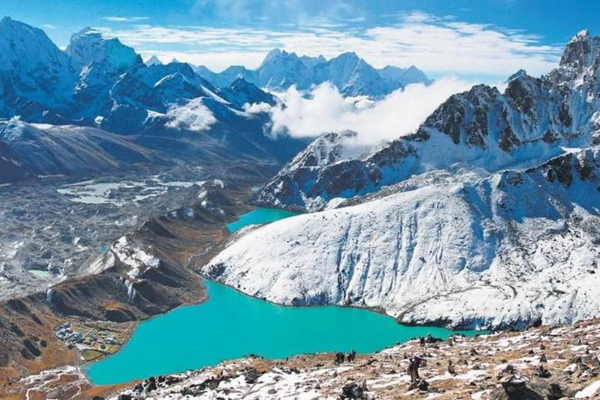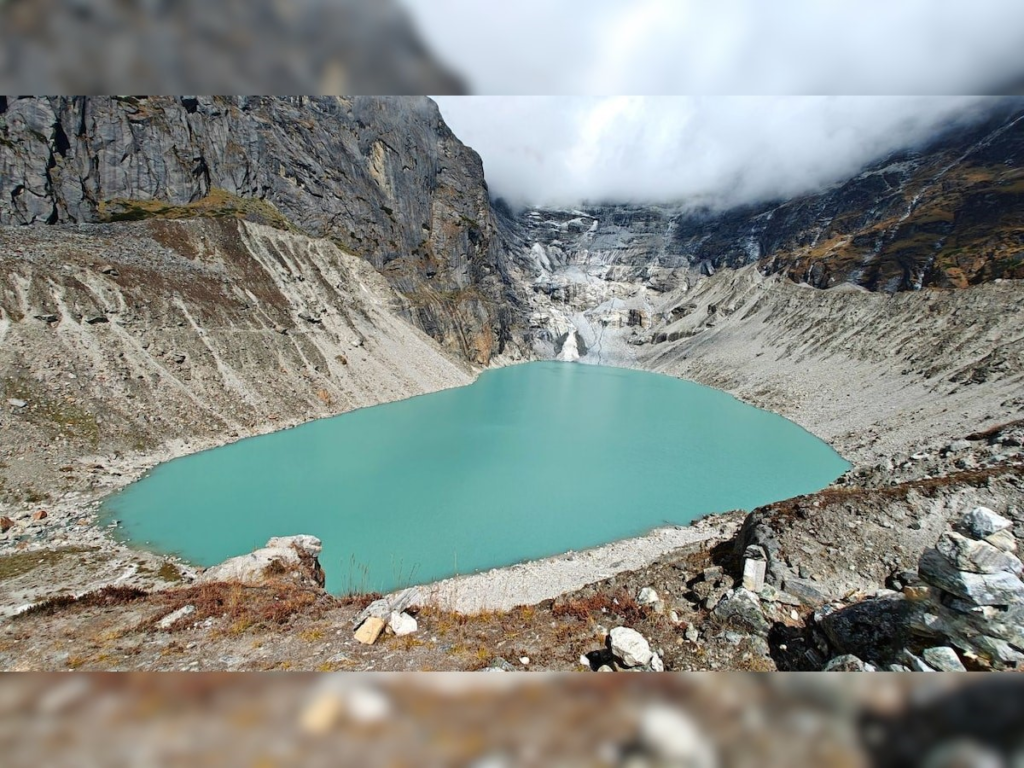Expanding glacial lakes in Himalayas, highlighted by recent ISRO findings, underscore the profound impact of global warming on this sensitive region.
- Himalayan Mountains, often termed the Third Pole, are highly sensitive to global climate changes, impacting both physical characteristics and societal aspects.
About Glacial Lakes:
- Glacial lakes are body of water formed by the melting of glaciers in high-altitude regions like the Himalayas.
- These lakes serve as crucial freshwater sources for rivers in the Himalayan region.
- The glacial lakes are categorized based on their formation process into four broad categories:
- Moraine-dammed (water dammed by moraine), Ice-dammed (water dammed by ice), Erosion (water dammed in depressions formed by erosion), and other glacial lakes.
ISRO’s Findings:
- ISRO’s analysis reveals that 89% of the 2,431 glacial lakes identified in the Himalayas have expanded since 1984.
- Of the 2,431 glacial lakes larger than 10 hectares, 676 have significantly expanded, and at least 130 of these lakes are in India – 65 (Indus river basin), 7 (Ganga river basin), and 58 (Brahmaputra river basin).
- Among the 676 expanding lakes, the majority of them are Moraine-dammed (307) followed by Erosion (265), other (96), and Ice-dammed (8) glacial lakes, respectively.
- Expansion of glacial lakes pose a risk of Glacial Lake Outburst Floods (GLOFs).
About GLOFs:
- GLOFs occur when glacial lakes release large volumes of meltwater due to the failure of natural dams, such as those made of moraine or ice, resulting in sudden and severe flooding downstream.
- These dam failures can be triggered by various factors, including avalanches of ice or rock, extreme weather events, and other environmental factors.
- GLOFs pose significant risks to communities downstream.
- GLOFs are identified as a potential climatological disaster in India’s National Disaster Management Plan for 2019.
Challenges and Importance of the study:
- Monitoring and studying the occurrence and expansion of glacial lakes in the Himalayan region is considered challenging due to the inaccessible and rugged terrain.
- Satellite remote sensing technology is a valuable tool for inventory and monitoring, given its extensive coverage and revisit capability.
- Assessing long-term changes in glacial lakes is essential for understanding glacier retreat rates, evaluating risks of glacial lake outburst floods (GLOFs), and gaining insights into the impacts of climate change.
Ref:Source
| UPSC IAS Preparation Resources | |
| Current Affairs Analysis | Topperspedia |
| GS Shots | Simply Explained |
| Daily Flash Cards | Daily Quiz |



